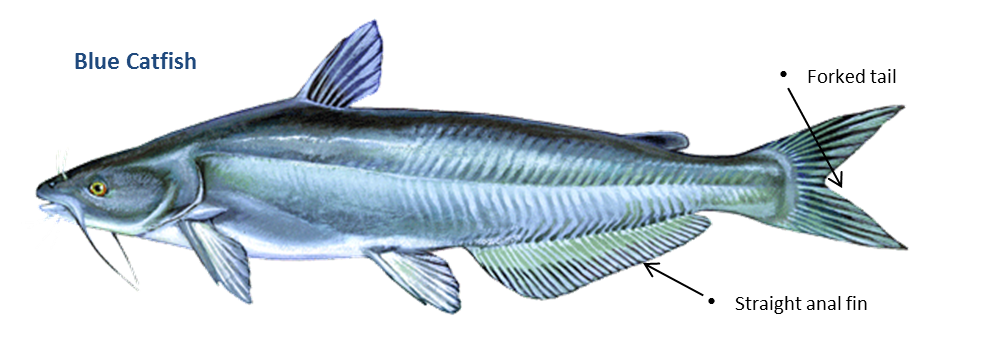
The catch-and-release concept has long been used by fisherman to promote conservation, but a lot of anglers still enjoy an occasional fish fry to celebrate their catch at the end of the day. From the Blue Ridge to the Chesapeake Bay, the Rappahannock River is full of tasty bass, sunfish, catfish, and many saltwater species, like striped bass and croaker.
However, it’s important to note that certain sections of the river, including everything from I-95 to the mouth at Stingray Point, have since 2004 been under Fish Consumption Advisories issued by the Virginia Department of Health (VDH). Such advisories are updated periodically, and are based on fish tissue analyses accomplished by the Virginia Department of Environmental Quality (DEQ).
Rappahannock Basin fish consumption advisories are based on the presence of polychlorinated biphenyls (PCBs) and mercury, two persistent pollutants that have been in the river for decades. Rappahannock advisories suggest eating no more than two meals per month of the affected fish species. In general, these pollutants biomagnify in a fish, so it is better to eat younger, smaller fish, rather than older, larger fish.
“High risk individuals, such as women who are pregnant, or may become pregnant, nursing mothers, and young children, are advised not to eat any fish contaminated either with polychlorinated biphenyls (PCBs) or mercury,” added Smigo.
See the associated chart for more details about advisories on the Rappahannock. For more information about Virginia fish consumption advisories in general, such as how PCBs affect children, check out the current Rappahannock River Basin Fish Advisory.
Smigo said that it is important to note that the American Heart Association’s recommended servings per week are slightly different than the eight-ounce volume (i.e. about seven ounces of fatty fish per week across two meals). In terms of weighing the risks and benefits of consuming fish versus concerns over fish consumption advisories, there is good information available to help make that decision. For more information about the benefits of eating fish and sources of omega 3 foods, check out this article.
Rappahannock River Basin Fish Consumption Advisories
- The Rappahannock River is contaminated with PCBs and mercury from the I-95 bridge above Fredericksburg, downstream to the mouth of river near Stingray Point, including its tributaries Hazel Run up to the I-95 bridge crossing and Claiborne Run up to the Rt. 1 bridge crossing. Species: American eel, blue catfish, carp, channel catfish, croaker, gizzard shad, and striped bass. No more than 2 meals
- Mountain Run is contaminated with PCBs from the Rt. 15/29 bridge crossing near Culpeper City, for 19 miles to its confluence with the Rappahannock River. Species: American eel. No more than 2 meals per month.
- Motts Run Reservoir is contaminated with mercury. Species: Largemouth bass. No more than 2 meals per month.
- Chandler’s Mill Pond in Westmoreland County is contaminated with mercury. Species: Largemouth bass. No more than 2 meals per month.
For more information about your part of the river, reach out to one of our river stewards.

